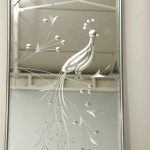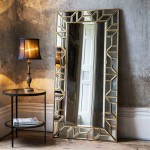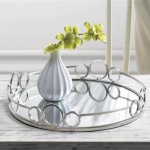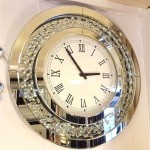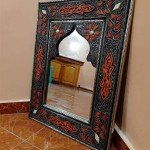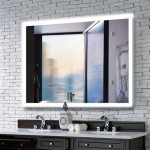Do Concave Mirrors Produce Virtual Images?
Concave mirrors, with their inwardly curving reflective surfaces, are known for their ability to produce a variety of images, both real and virtual. Understanding the conditions under which a concave mirror forms a virtual image requires a closer examination of the mirror's geometry and the principles of image formation.
The focal point of a concave mirror is the point where parallel rays of light converge after reflection. The focal length, denoted by 'f', is the distance between the focal point and the mirror's vertex (the center of the mirror's surface). The radius of curvature, 'R', is the distance from the vertex to the center of the sphere from which the mirror is a section; it is always twice the focal length (R = 2f).
Object distance, 'u', is the distance between the object and the mirror's vertex. Image distance, 'v', is the distance between the image and the mirror's vertex. These distances are measured along the principal axis, the line passing through the vertex and the center of curvature. Sign conventions are crucial: distances measured in the direction of incident light are positive, while those against the incident light are negative. Heights above the principal axis are positive, and heights below are negative.
The mirror equation relates these distances and the focal length: 1/u + 1/v = 1/f. This equation helps determine the image distance based on the object distance and focal length. The magnification, 'M', describes the size and orientation of the image compared to the object. It is calculated as M = -v/u. A negative magnification indicates an inverted image, while a positive magnification indicates an upright image.
A real image is formed when light rays converge after reflection and can be projected onto a screen. A virtual image, on the other hand, is formed when light rays appear to diverge from a point behind the mirror. Virtual images cannot be projected onto a screen but can be observed by looking into the mirror.
Now, addressing the central question: can concave mirrors produce virtual images? The answer is yes, under specific conditions. When an object is placed between the focal point and the mirror's vertex (0 < u < f), the reflected rays diverge. Extending these rays backward, behind the mirror, reveals their apparent point of origin. This is where the virtual image is formed. The image, in this case, is upright, magnified (M > 1), and located behind the mirror (v < 0).
Consider a practical example: using a concave mirror as a shaving or makeup mirror. When one's face is close to the mirror, within the focal length, a magnified and upright virtual image is observed. This magnification allows for a clearer view of details. Moving the face further away, beyond the focal point, transitions the image to a real, inverted, and potentially diminished image projected in front of the mirror.
Ray diagrams provide a visual method for understanding image formation. Three principal rays are typically used: a ray parallel to the principal axis reflects through the focal point; a ray passing through the focal point reflects parallel to the principal axis; and a ray passing through the center of curvature reflects back along the same path. For an object placed within the focal length, these rays diverge after reflection. Extending them backward reveals the location of the virtual image.
In contrast, when an object is placed beyond the focal point (u > f), a real image is formed. The reflected rays converge in front of the mirror, creating an image that can be projected onto a screen. The nature of this real image (inverted or upright, magnified or diminished) depends on the object's specific location relative to the center of curvature and the focal point. When the object is placed at the center of curvature (u = R), the image is real, inverted, and the same size as the object (M = -1).
The behavior of light reflecting off a concave mirror adheres to the laws of reflection: the angle of incidence (the angle between the incident ray and the normal to the mirror surface) equals the angle of reflection (the angle between the reflected ray and the normal). These laws, combined with the mirror's geometry, govern the paths of the reflected rays and determine the location, size, and orientation of the image.
In summary, concave mirrors can indeed produce virtual images. This occurs when the object is placed within the focal length of the mirror. The virtual image formed is upright, magnified, and appears behind the mirror. Understanding the relationship between object distance, image distance, focal length, and magnification allows for predicting and understanding the type of image formed by a concave mirror under various conditions.

Concave Mirror
In What Condition Is The Image Formed By Concave Mirror Virtual Quora

When Is A Real Image Formed By Virtual Object In Concave Mirror Quora

A Concave Mirror Produces Virtual Image That Is Three Times As Tall The Object 20 Cm In Front Of I Sketch Location With

Image Formation By Concave Mirrors

Virtual Image Wikipedia

A Concave Mirror Cannot Form Virtual Image Of Real Objectvirtual Objectreal Object
Can A Convex Mirror Produce Real Image When The Object Is Virtual And Vice Versa Concave If Yes How Will It Be Possible Why Quora

Difference Between Real Image And Virtual With Comparison Chart Key Differences

A Virtual Image Larger Than The Object Can Be Produce By

